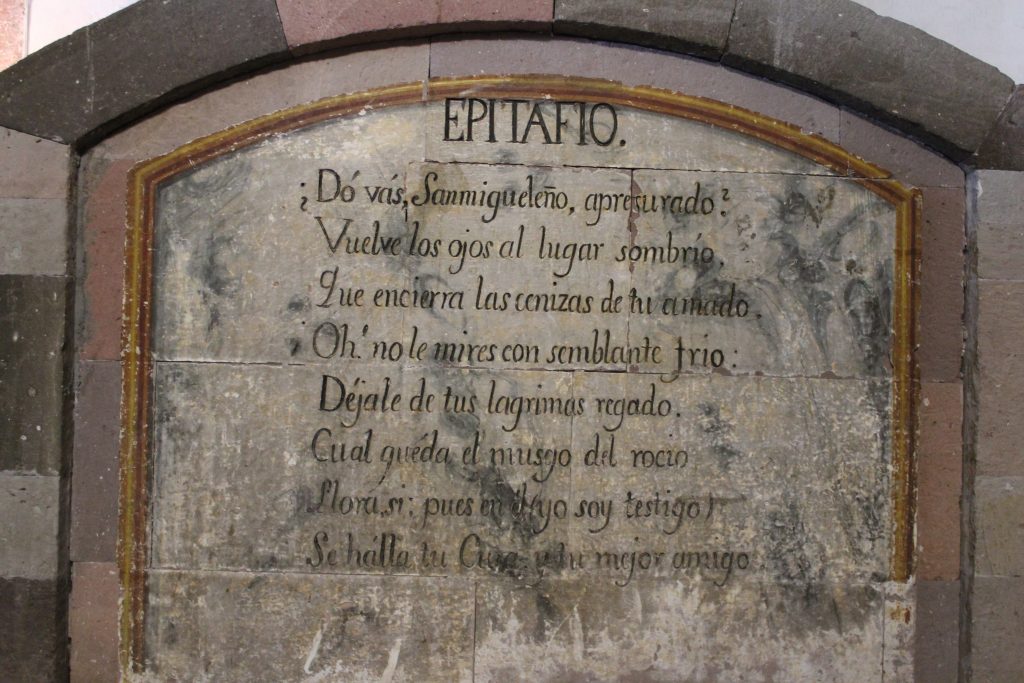By Jesús Aguado
Throughout the year, the crypt of the Parroquia of San Miguel Arcángel remains closed to the general public because the dead must be allowed to rest. But every November 1 and 2, from 7am-7pm, it opens to visitors.
Those who rest here
A Mexican flag stands in one of the corners, and another lies on the ground over the tomb of President of Mexico Anastasio Bustamante. He was a popular leader because he fought against the insurgents during the War of Independence (1810-1821) and later joined Agustín de Iturbide to establish Mexico’s Independence. He assumed the presidency of Mexico in 1830 but had to leave office in 1833 following protests against him for the killing of Vicente Guerrero, which he had ordered. He held the presidency again from 1837 to 1839, then retired in San Miguel, where he died in 1853. The house where he resided is owned by the Sautto family, on Calle San Francisco 38. According to his wishes, his heart is buried in the Metropolitan Cathedral of Mexico City, next to the remains of Agustín de Iturbide. However, his body is buried in the parish crypt.

Under one of the windows is the tomb of Father Juan Manuel de Villegas, parish priest from 1736 to 1776, who was also a commissioner of the Holy Inquisition in San Miguel. As parish priest, Villegas stamped his signature on Ignacio Allende’s birth certificate, kept in the parish archives. He was originally buried in the parish cemetery, but his mortal remains were among those that were transferred to the crypt in 1842. Unfortunately, his grave does not have a headstone.
Other mortal remains are those of Father Francisco de Uraga, who died in 1830 and was a parish priest at the time of the outbreak of the War of Independence. He was one of the conspirators, along with Allende, and lived to see the birth of Mexico as an independent country. His tombstone bears the epitaph quoted at the beginning of this article.
Father Remigio González and his brother Felipe are also buried in the parish crypt. Father Remigio died in 1837, and his remains were transferred to the crypt in 1842. He was chaplain of the Jesús Nazareno Sanctuary in Atotonilco, where he received Allende, Hidalgo, and the rest of the insurgent arm, on September 16, 1810. It was here that one of the pious women at the Shrine gave the insurgents an image of the Virgin of Guadalupe. Father Remigio was also the one who sculpted the venerated image of the Lord of the Column. The sculpture is currently in Atotonilco and is brought to San Miguel every year in the days before Easter. His brother, Felipe, was the conspirator who advised Allende to ask Hidalgo to lead the insurrection.




